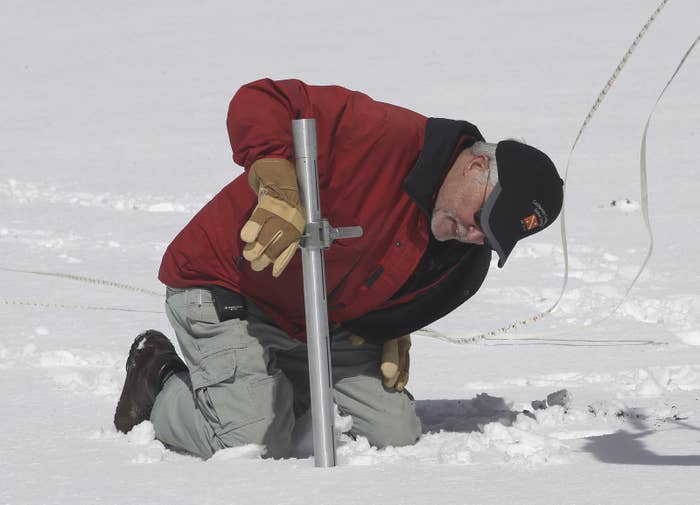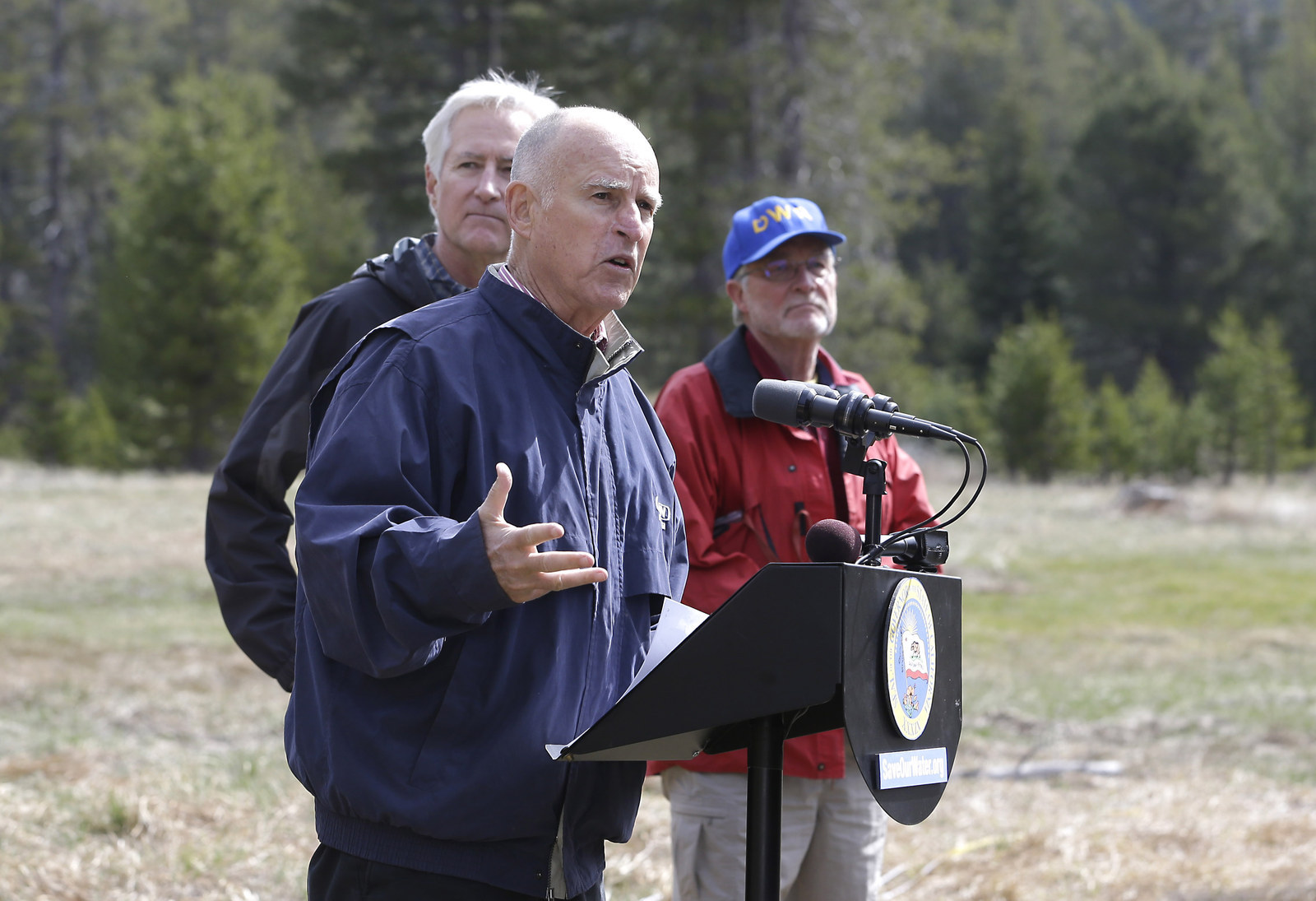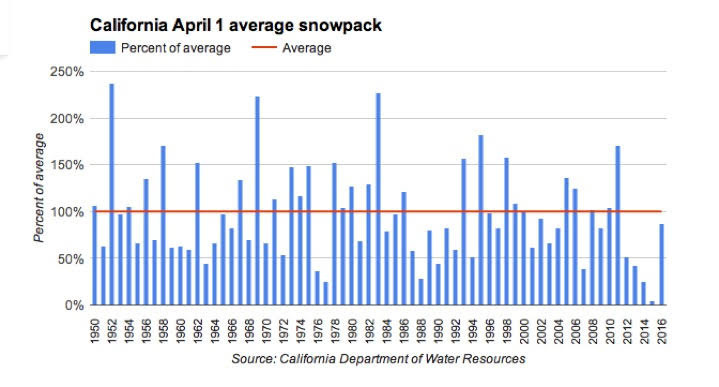
California almost got as much snow as average this winter — but that’s a drop in the bucket toward making up for years of extreme drought.
Forecasters had hoped an unprecedentedly strong El Niño would bring heavy rain and snow to the state. In much of California though, the big rains never materialized, and on Wednesday, the Department of Water and Resources said the snowpack was measured at just below average.

The readings mark what is typically the peak of snow depth and water content for the state’s mountains, which through the rest of the year feed reservoirs as the snow melts.
Statewide, mountain snowpack measured up to 87% of the historical average. In the Sierra Nevadas, east of Sacramento, a snow survey on Wednesday measured 97% of the average.
The measurements were disappointing, and mean Californians will continue to feel the effects of multiple years of drought, said Frank Gehrke, chief of the California Cooperative Snow Surveys Program.
"We're barely average," Gehrke told reporters. "It stops that downward slide."
Still, it was a dramatic increase from the same time last year, when Gov. Jerry Brown stood on bare, dusty ground to declare new water conservation measures. The snowpack was effectively zero then, and previous years were also strikingly low.

“If you look over the last five years, relatively speaking, this has been spectacular,” Bill Patzert, a NASA climatologist, told BuzzFeed News.
Patzert had earlier said this year’s El Niño would be a "Godzilla" that would soak Southern California. Previous El Niño-driven systems had left the L.A. area overwhelmed with rain.
This year’s system was a Godzilla across the globe — just not in Southern California, where it was more of a gecko, Patzert said. But even if the storms had left the snowpack at double its average, California would still be plagued by drought.
“It still wouldn’t have been a drought buster,” he said.

Ultimately, California has seen low water levels — with only a few outliers — for the last 15 years, Patzert said. Some of that is due to nature, and some of that is due to skyrocketing demand as California’s population has swelled alongside agriculture and industry, he said.
“It’s a wakeup call for a new lifestyle that we should have done a few decades ago,” he said.
At this point, he added, it’s not clear what the type of weather systems are in store for the state. Typically, an El Niño is followed by La Niña, which drives drier conditions in the West.

That could happen, Patzert said. Or, El Niño could do a “double bounce,” bringing more moisture to the region.
“At this point,” he said, “even if you have your receipt, you might want to save your galoshes and raincoat.”
To state snow surveyors, it's entirely uncertain whether this year's snowfall could signal snowier winters to come or not.
"There are no reliable indicators of what next season could bring," Gehrke said. "The message is still very strong the conservation measures are still going to be important, because again, we don't know what next year will bring."
